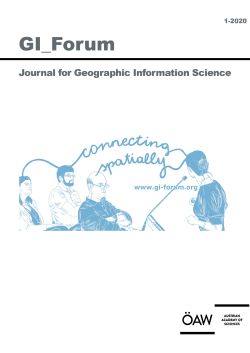
GI_Forum 2020, Volume 8, Issue 1, pp. 32-46, 2020/06/25
Journal for Geographic Information Science

In addition to their purely linguistic content, legacy language collections often contain other information, such as geographical and spatial details, e.g. locations, regions and municipalities. Such information may offer valuable insights into the linguistic landscape, but it may also pose challenges when some aspects remain ambiguous. This paper outlines and discusses various known and unknown uncertainties of spatial aspects contained in a non-standard German language legacy dataset (DBÖ) that has undergone several stages of data conversion since the early nineties. The authors introduce and discuss their taxonomy of uncertainties, exemplified by applying it to the spatial information contained in the DBÖ, the origins of which date back one hundred years. Finally, the authors discuss how the uncertainties found in the dataset affect Digital Humanities practice more widely.
Keywords: Digital Humanities, spatial uncertainty, taxonomy, historic collections